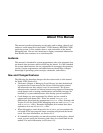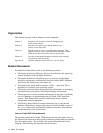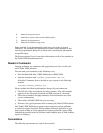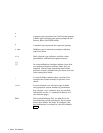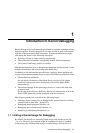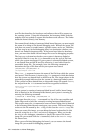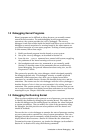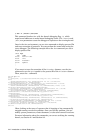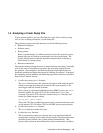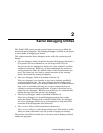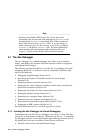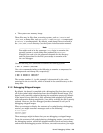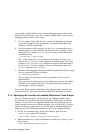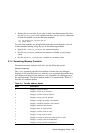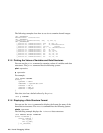1.4 Analyzing a Crash Dump File
If your system crashes, you can often find the cause of the crash by using
dbx or kdbx to debug or analyze a crash dump file.
The operating system can crash because one of the following occurs:
• Hardware exception
• Software panic
• Hung system
When a system hangs, it is often necessary to force the system to create
dumps that you can analyze to determine why the system hung. The
System Administration manual describes the procedure for forcing a
crash dump of a hung system.
• Resource exhaustion
The system crashes or hangs because it cannot continue executing. Normally,
even in the case of a hardware exception, the operating system detects
the problem. (For example a machine-checking routine might discover a
hardware problem and begin the process of crashing the system.) In general,
the operating system performs the following steps when it detects a problem
from which it cannot recover:
1. It calls the system panic function.
The panic function saves the contents of registers and sends the panic
string (a message describing the reason for the system panic) to the
error logger and the console terminal.
If the system is a Symmetric Multiprocessing (SMP) system, the panic
function notifies the other CPUs in the system that a panic has
occurred. The other CPUs then also execute the panic function and
record the following panic string:
cpu_ip_intr: panic request
Once each CPU has recorded the system panic, execution continues only
on the master CPU. All other CPUs in the SMP system stop execution.
2. It calls the system boot function.
The boot function records the stack.
3. It calls the dump function.
The dump function copies core memory into swap partitions and the
system stops running or the reboot process begins. Console environment
variables control whether the system reboots automatically. (The
System Administration manual describes these environment variables.)
Introduction to Kernel Debugging 1–5



